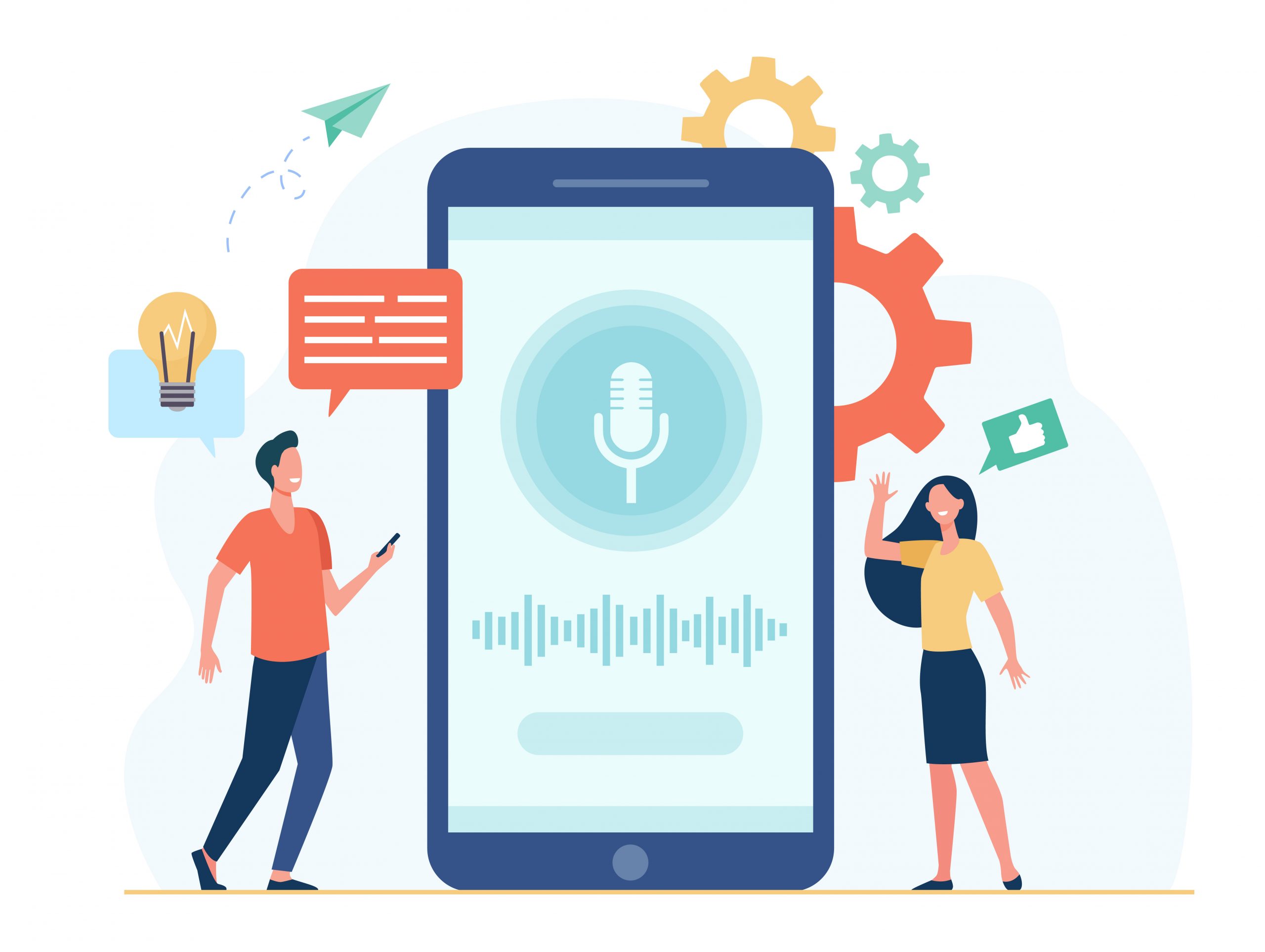Automatic Speech Recognition (ASR for short) is software that turns voice files into written text. Voice recognition applications can detect speech and identify it as a sequence of words. This is the basis that allows computing devices to comprehend our spoken language, the most natural tool of communication. Before this technology existed, all we could do was to record some audios, with the logical ups and downs of sound signal. With ASR computers detect patterns as sound waveforms, match them with sounds in the language, and identify the words we speak. Originally services were of low functionality, but there have been great advancements, and continue to be.
More and more users access the web on their mobiles and with the help of voice assistants. Statistics risk nearly 50% of adults use this function daily. This is becoming indispensable in eCommerce, as half of consumers throughout the world admit they made some purchase using voice search in 2021. As you can integrate voice into a digital marketing campaign, for example, you can recourse on the possibility of segmenting your audience, to address a particular social group.

This technology has evolved to the point of rendering APIs that are a crucial tool in life, which have eased down our living, work and study. Applications can understand the way you speak, supporting languages, accents, dialects, jargons, etc. They filter environmental noise, and ignore mumbling and even hesitations when you are thinking aloud. Most important still: computers and appliances in general can respond to your queries orally!
Voice recognition has advanced to meet the requirements of education, to assist those with cognitive or physical disorders, for hands-free operation. We can talk with a computer, and we do not need a mouse or a keyboard or a touch-screen. Whatever you are seeking on the web you will find it just by voice commanding. There is no mystery: computers recognize our speech, they can answer our questions…and it is not magic, but merely technology that turns voice into text.
Many APIs developers, like Zyla Labs, Google Speech-to-Text or Microsoft Cognitive Services are concerned in optimizing platforms to satisfy the more and more demanding users` expectations and needs. English Speech-to-Text API is a useful tool that renders faster, lighter and quicker to load output. Other APIs complement this platform to make it more accurate and time-saving (Get Transcript Result API, Transcribe Speech API, Transcribe Record Into Text API, and many more).
This technology has optimized its service by integrating smart assistants like Alexa, that interact with the user to respond when he asks Alexa, what time is it? for example.
The three platforms are basically intuitive systems that boast high popularity in the market. They are being updated on a daily basis, and the performed adjustments let improve their accuracy, immediate response, real-time processing, time-saving and ample powerful support. They have the potential to pick from various ML models, which increases the accuracy of their operation. Audios and videos as well as phone calls are also categories supported by the APIs.
Speech-to-text technology also detects punctuation, tagging with metadata, varied speech styles and voice patterns, custom vocabulary, etc. It guarantees security, analyses of audio, real-time transcription, tailored vocabulary and many more solutions.
You do not need expertise to design and build voice experiences. Alexa is an outstanding tool that enables users to access content and request services by just commanding with your voice, to start up the required service by the speech-to-text API.





